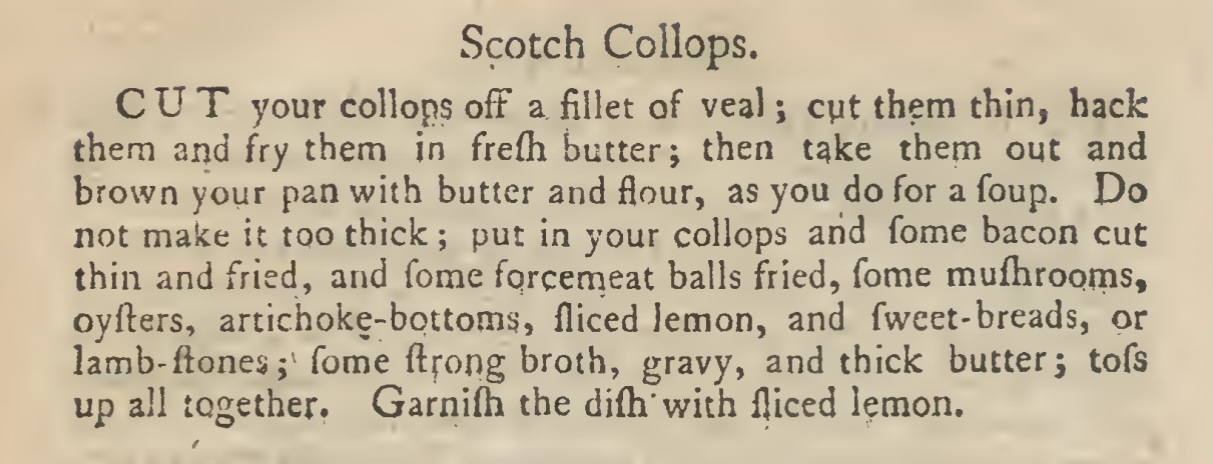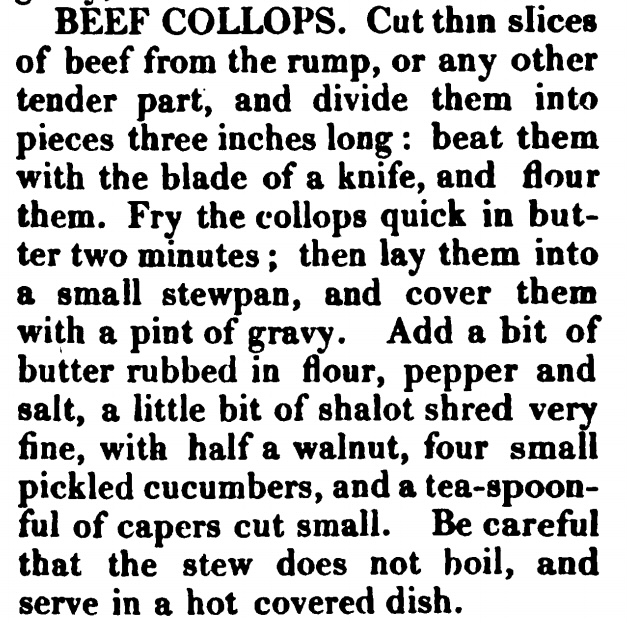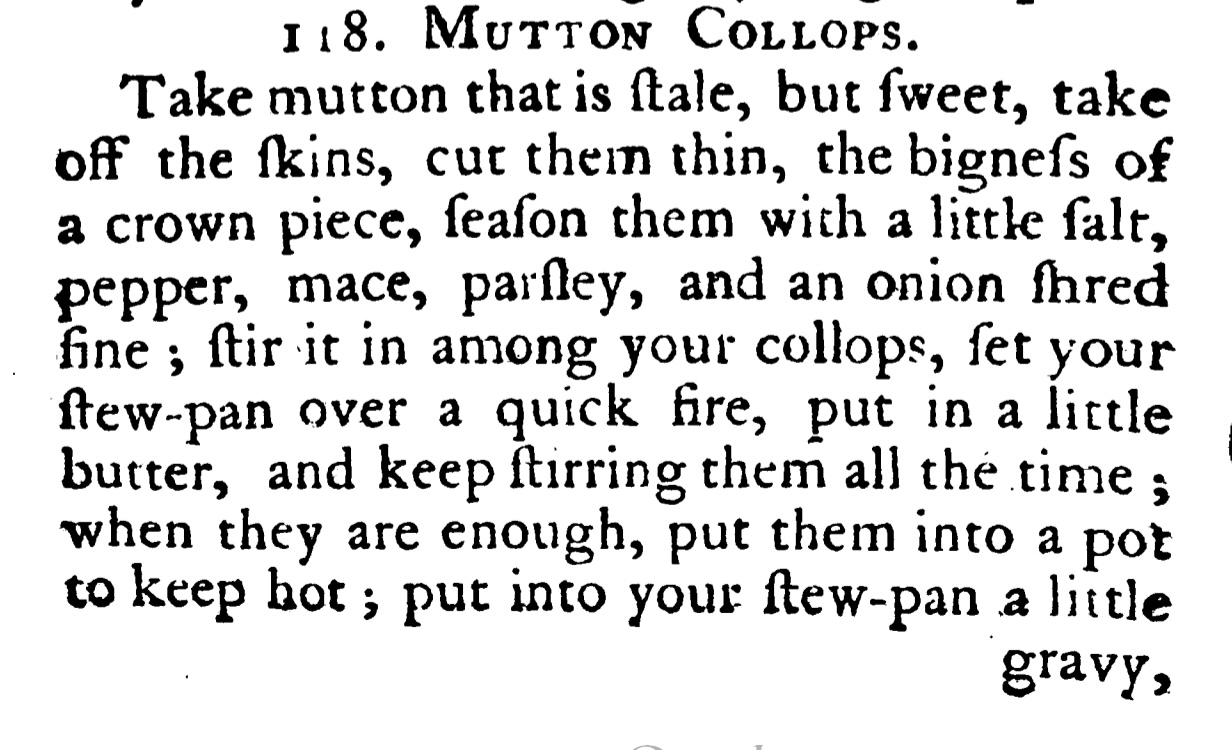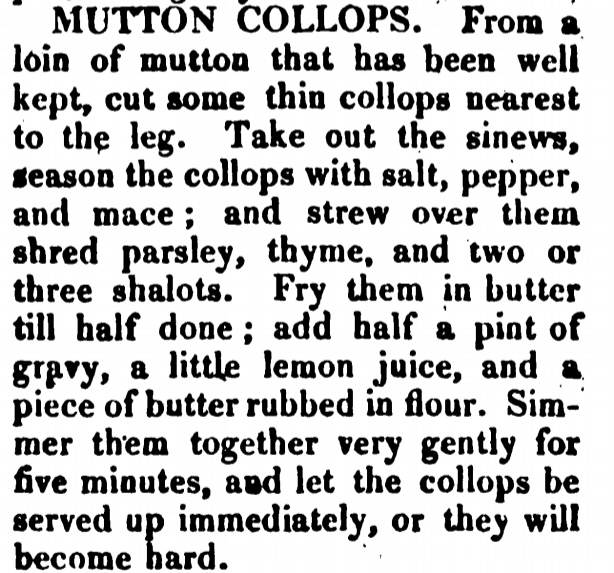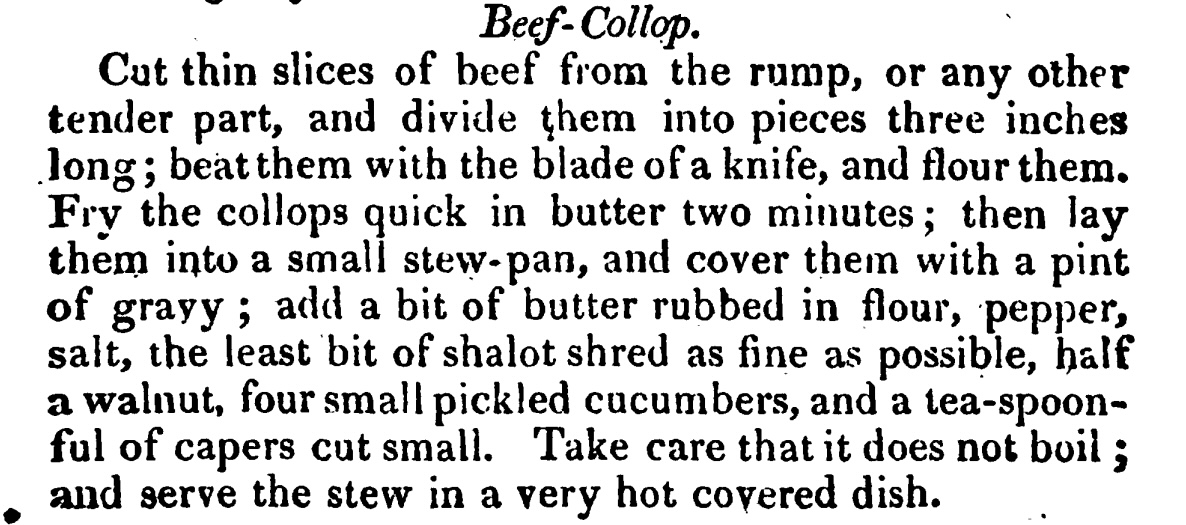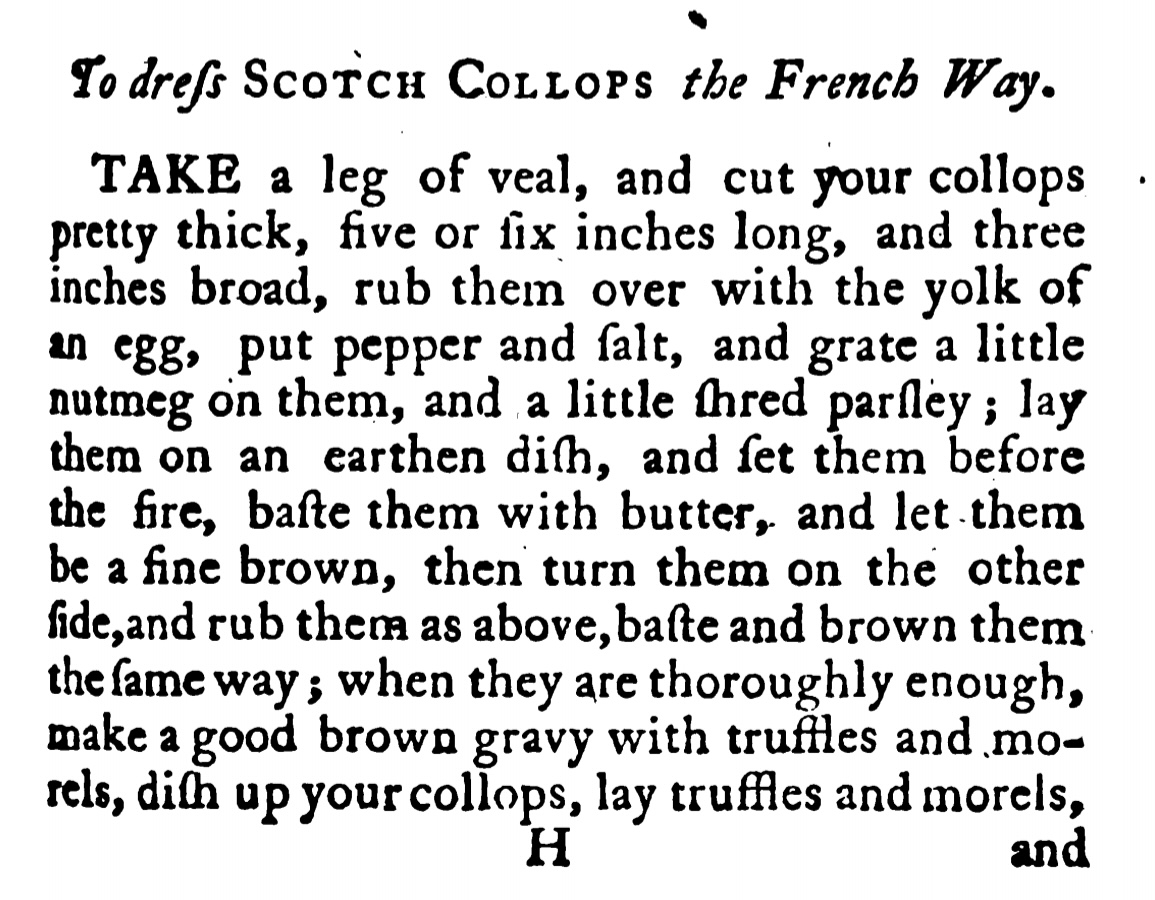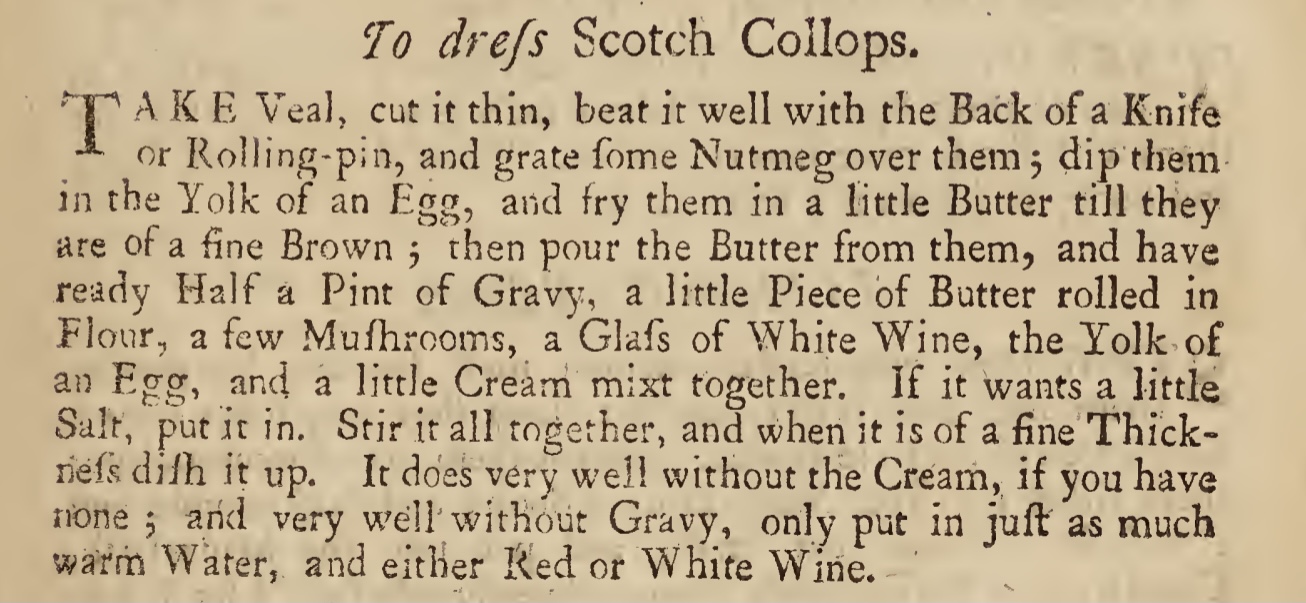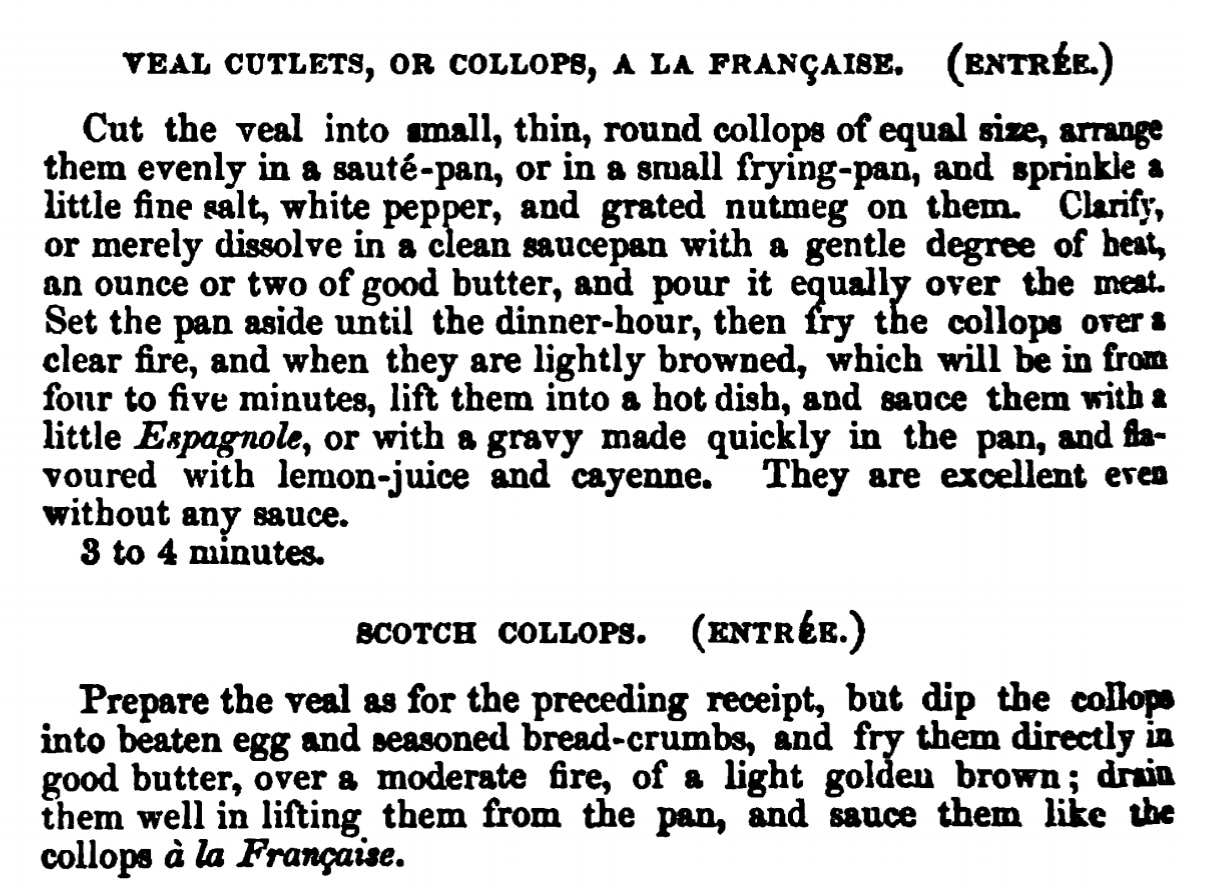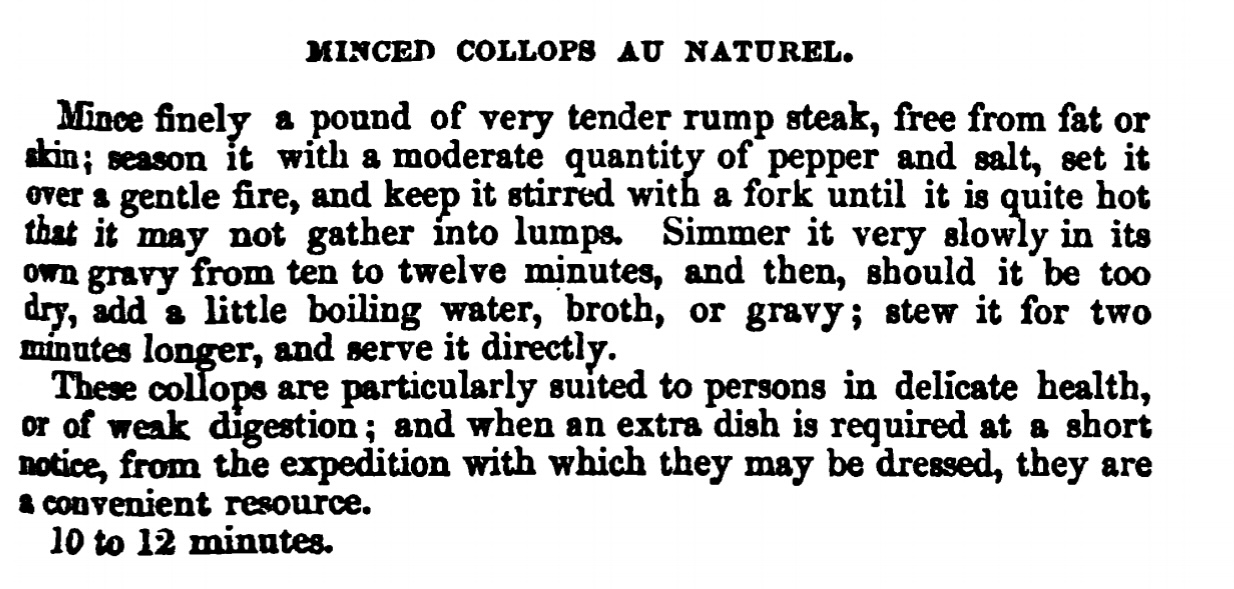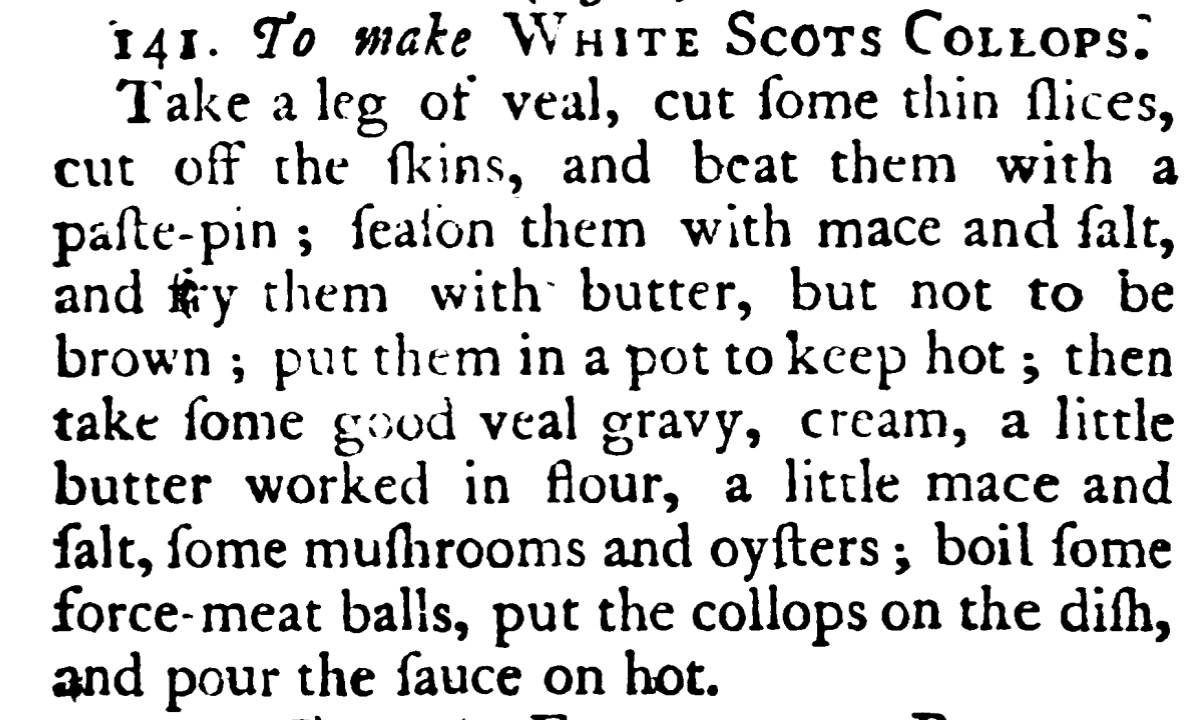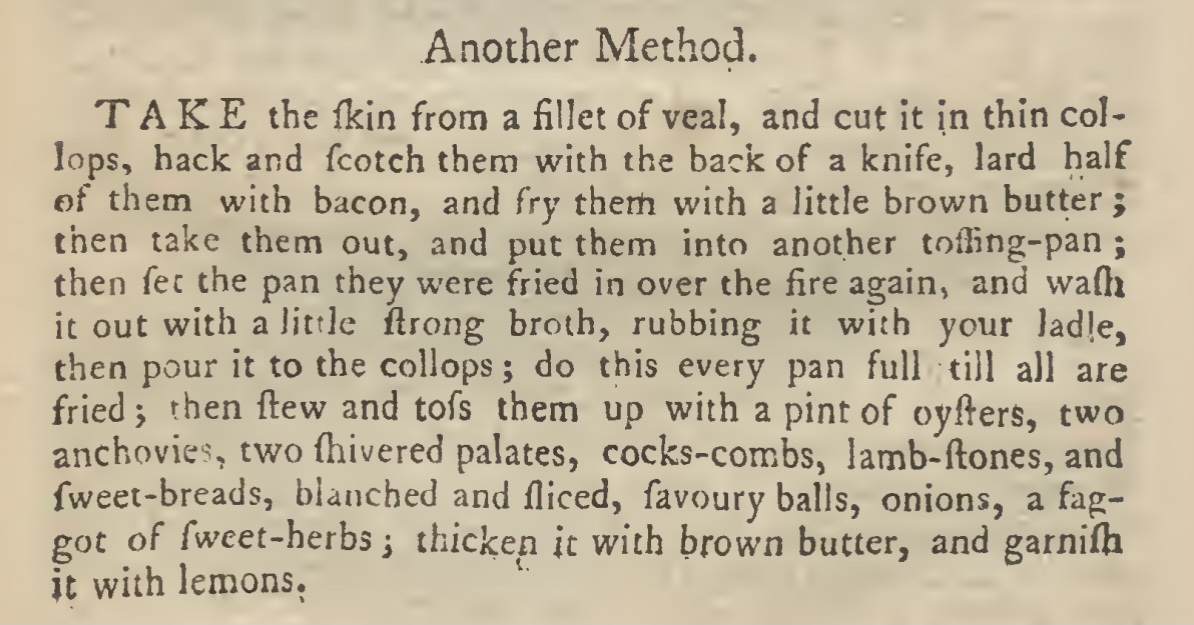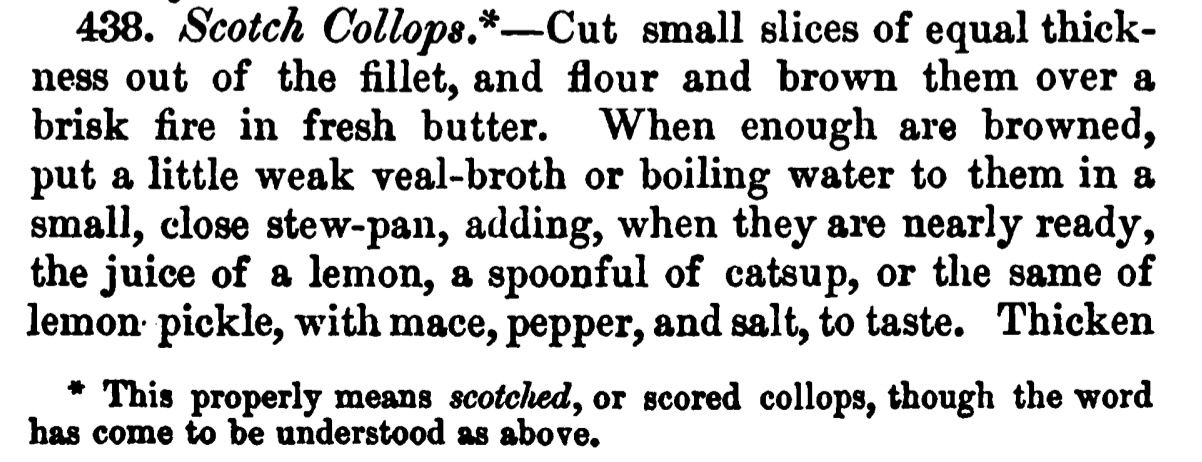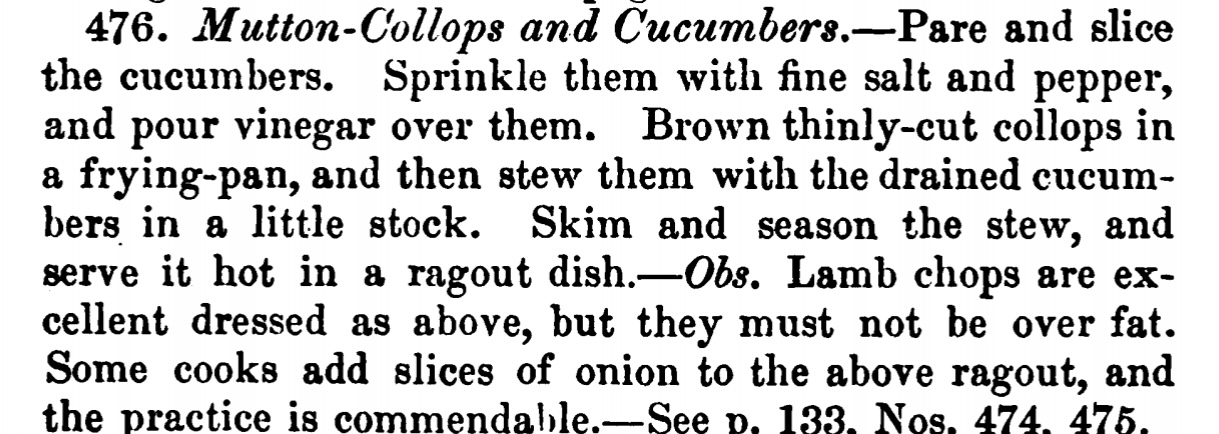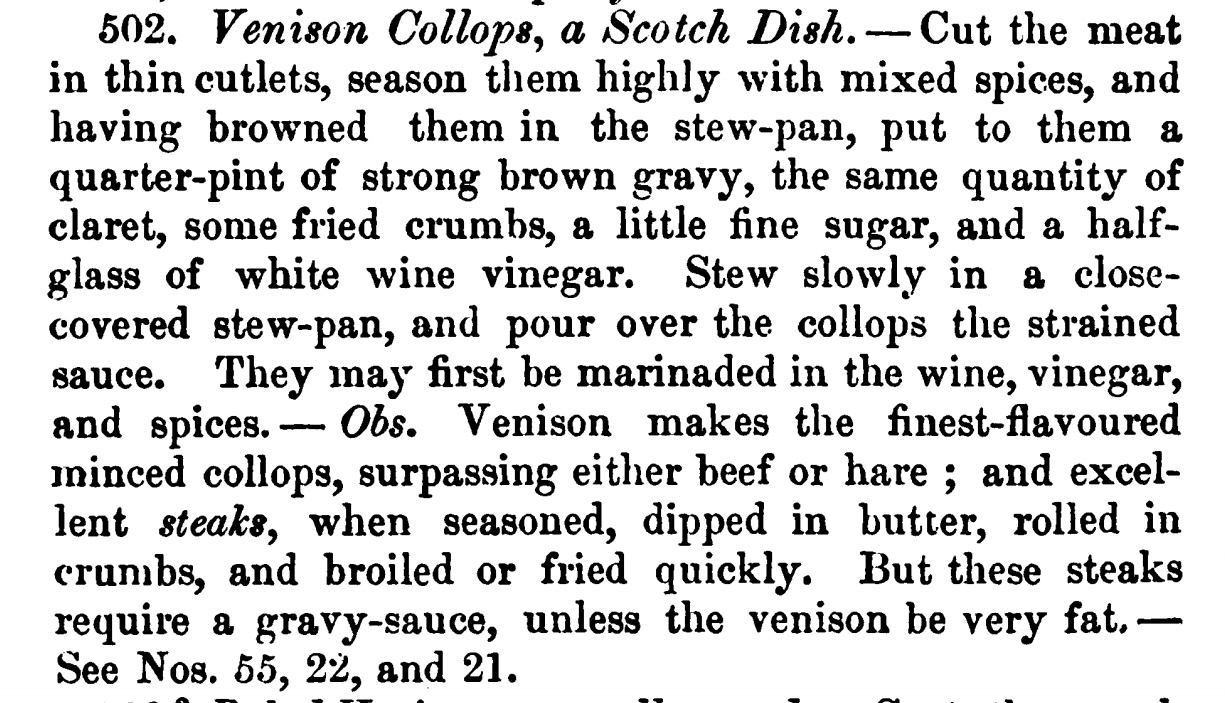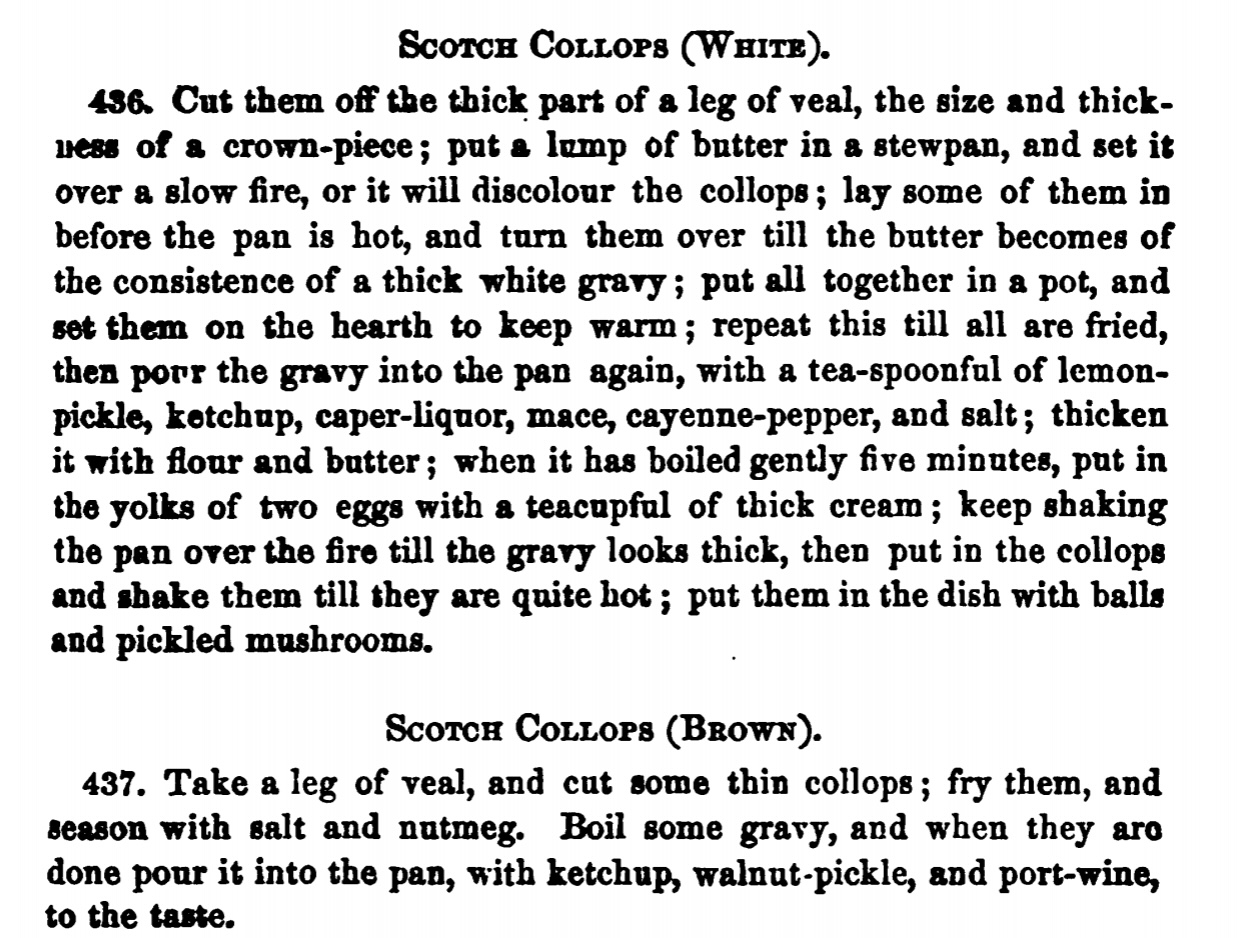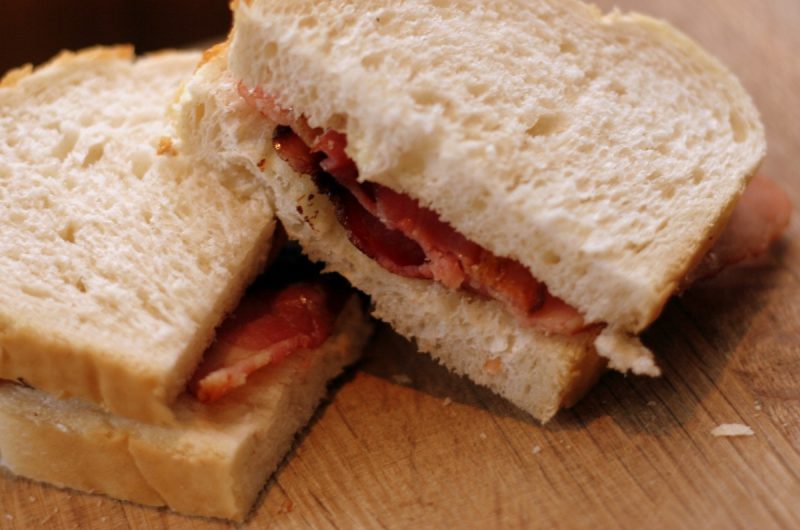In which we discover that life can be interesting if you accept the unusual, that a collop can be many things and that sometimes acquiring a prince can be a lot of effort. This tale also involves an amazing shoe collection, ice lakes, glass mountains, a prince who sleeps soundly, a bull with unlimited food and drink in its ears, magical fruit and incredible jewellery.
In which we discover that life can be interesting if you accept the unusual, that a collop can be many things and that sometimes acquiring a prince can be a lot of effort. This tale also involves an amazing shoe collection, ice lakes, glass mountains, a prince who sleeps soundly, a bull with unlimited food and drink in his ears, magical fruit and incredible jewelry.
This tale for this episode is The Black Bull of Norroway, a wonderful and joyful folk tale with a moral that slaps you round the face rather than whispering in your ear but it seems like an appropriate one in these tricky times.
The episode recipe is Bacon, Cheese & Mushroom Sandwich, excellent recovery food for the morning after the night before.
If you want to find out anything about the books or links I mentioned in the podcast you can find them in Further Reading. This is also where you would find more information about the history of collops and other sources of information in this week’s podcast.
You can also find out more at Hestia’s Kitchen which has all past episodes and the connected recipes on the blog. If you’d like to get in touch about the podcast you can find me on Twitter or Instagram at @FairyTalesFood.
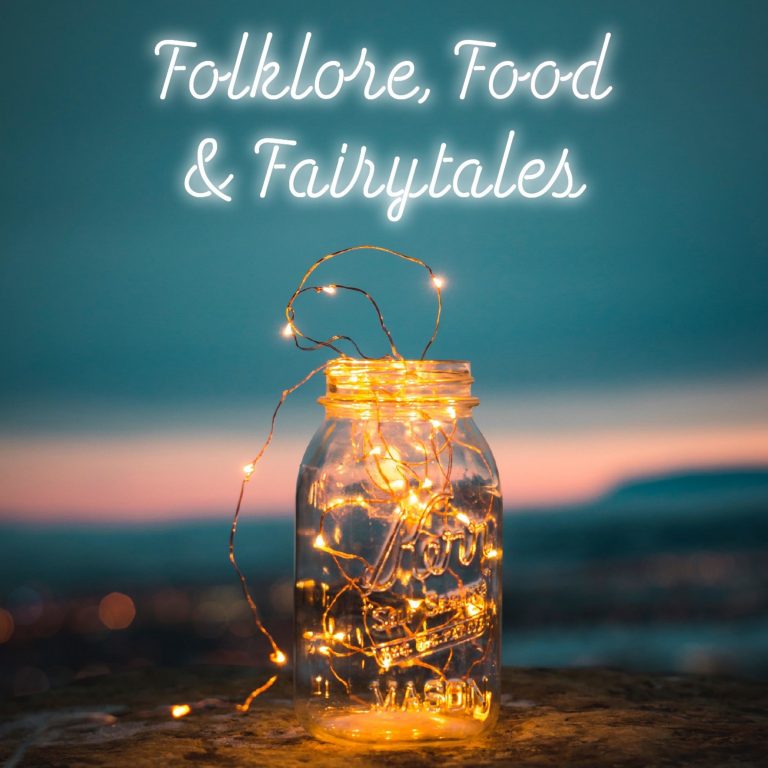
An Identity Crisis
So what did you think? This tale came, as I mentioned, from More English Fairy Tales by Joseph Jacobs but in reality this is really a Scottish tale. The version from Andrew Lang’s Blue Fairy Book is written much more in dialect. There are also two stories of the Bull of Norroway, one black; one red. One that involves the daughters of a what we must assume is not a wealthy woman if only from the choices of snack and the necessity to seek their fortune and another one that involves the daughters of a king. They share many similarities and indeed I have borrowed some elements from this and a nineteenth literary version of this tale to flesh out the story a little.
Some History
So where did this story come from? It is said by Richard Chambers to be mentioned in the the Complaynt of Scotland from 1598 and is mentioned by John Leydon in ‘The Court of Keeldar’
‘And many a hunting song they sung, And song of game and glee; Then tuned to plaintive strains their tongue, “Of Scotland’s luve and lee.” To wilder measures next they turn “The Black, Black Bull of Norroway!” Sudden the tapers cease to burn, The minstrels cease to play.’
“The Cout of Keeldar,” by J. Leyden.
It certainly has the feel of an old story and perhaps that’s unsurprising when you consider that the tale type it comes from (ATU 425 Search for A Lost Husband) can be identified as far back as the ancient greeks in the form of Cupid & Psyche. In this tale type the woman in the tale is usually practically kidnapped by an enchanted beast (ATU425A), falls in love and then because of some (often small) infraction she ensures that her beloved will then disappear. She must then go on a long and arduous journey to get him back. She is usually aided by women or other helpers on the way who give her gifts to help overcome further trials at the end of her journey. There is often shirt washing/mending or making involved.
East of the Sun, West of the Moon
The most famous of the Lost Husband tales in western Europe is probably East of the Sun & West of the Moon which features a prince that has been transformed into a white bear. It contains the scene that our tale does not, that of taking advice from family to find out more about the husband in question thus leading to betrayal and continuing enchantment. This is noticeably missing from our tale where our heroine simply moves her foot against instruction and is then punished with hard work and a long and difficult journey.
The other thing missing from our story is any retribution dealt out to our heroine’s older sisters. As pride usually goes before a fall, you would expect two beautiful but not nice women who insisted on marrying above their station and according to their own wishes to be punished. But no, they get their earl and their baron and are never heard from again.
Its Basile Again
I know that I said we would have a rest from Giambattisa Basile but he has a story of the same tale type, which is perhaps a little more uplifting. In Basile’s tale, a wealthy young merchant’s daughter refuses to marry everyone brought before her and instead makes her own husband from sugar, rosewater and ground almonds and prays to the goddess of love turn her sugar figure into a real man. Her incredibly handsome husband is then stolen from her on her wedding day by a great queen and she proceeds in search of him all the while whilst growing increasingly more pregnant.
She is given three enchantments by her helper and uses them to create wonderful items that she trades the queen for nights with her husband. There is no washing here and she and her husband steal back her wonderful items and all the money and jewels of the false bride and escape to a wonderful life after resting in luxury for a while to allow her to give birth. The queen essentially explodes in anger when she finds out and all is then well.
Gifts Are Always Good
What makes these tales 425A (not just the obvious) is that the heroine usually uses gifts provided by helpers along the way to bribe her beloved’s new bride/bride-to-be to enable her to spend the night with him. This is very different to 425C for example where the bridegroom in question suffers illness and death because his beloved does not return to him as promised, the most famous example of this tale type is Beauty and the Beast. Tale type 425A also usually features a false bride who either enchants or fools the hero of the tale into thinking she is his true bride by using the work of the original beloved (see shirt washing as mentioned previously). The False Bride is another tale type we discussed at length in the two little pizza episode.
There is even a crossover of tour with the Cinderella variant as identified by Marian Roalfe Cox in her book Cinderella – 345 Variants of Cinderella, Catskin & Cap o Rushes from 1893. She specifically states that the tale is one which has several points of resemblance to the the Cinderella tales. She also references the Red Bull of Norroway.
A Woman’s Tale ……
These tales are very much women’s tales and are told by mothers to their daughters so that they might not be afraid of husbands that were much older than them or not as handsome as they might prefer. They were to reassure as well as to help young women to understand their place in society and what might happen to them if they behaved in a way that did not fit into the patriarchal society. The heroines in these stories were punished for the slightest infraction of the rules and it was understood that young women might face punishments from society if they stepped over the line of what was considered pleasing.
Feisty Shakespeare Heroines
This has also been identified in similar Indian tales by A. K. Ramanujan: tales ‘told by women about women and often to younger women’, in which ‘saving, rescuing, or reviving a man, often solving riddles on his behalf, becomes the life-task of the heroine. In such tales women predominate …. The antagonists are usually women … [and] her chief helpers also tend to be women.’
Ramanujan also notes that ‘marriage begins rather than ends the story; a separation ensues, and then a rescue of the male by the female’. The protagonists in these stories, Ramanujan continues, ‘are true cousins of the feisty heroines in Shakespeare’s comedies that owe their plots to Italian novellas, which in turn are related to tales in the Arabian Nights and the Kathaasaritsagard’
We are unusually also getting these tales from a woman’s perspective. As Karen Banford says in her article – “Foreign Affairs: The Search for the Lost Husband in Shakespeare’s “All’s Well that Ends Well” –
‘Since it is a woman-centered tale, we see things from the heroine’s point of view. Thus her husband is both beast and god; monstrous and beautiful; frightening and desirable’
Karen Banford
There is a lot more we could say on this but I think it would make for a very long podcast and there are people who definitely would say it better. There are links to both Karen Banford and A K Ramanujan in the further reading if you are interested.
Collop Monday
Instead of focussing on the folklore in the story itself this week we’re going to look at the folklore of the ingredient rather than the story because it has folklore all to itself. Also I suspect the folklore of numbers which comes up regularly through our tale is too big for this episode. What would you say if I said, eating up ingredients before lent is not just about Pancake Day or Shrove Tuesday? Obviously Shrove Tuesday is the star now, everyone loves a pancake, they can be adapted for all diets (although I admit tricky if both vegan and gluten free) can be sweet or savoury or even stuffed or layered and mean you can have fun showing off in the kitchen. Shrove Tuesday is all about the drama of a a good flip.
Flashy & Crowd Pleasing
Its sadly overtaken our other using up ingredients day as it is both flashy and crowd pleasing whereas Collop Monday is all about eating up meat. More sturdy and filling but less inclusive. Collops were slices of meat, often bacon fried and served usually with eggs on this day. Collop Monday took place on the Monday before Ash Wednesday and the resulting bacon fat was often used to fry the pancakes for Shrove Tuesday according to some sources.
It was popular in Tudor England and probably started in medieval times when the meat prohibition during Lent was taken significantly more seriously. It had virtually disappeared by the end of the 19th Century and in some locations pennies were given to children on this day instead and they would buy sweets with the money.
There is some disagreement whether the day got its name because people were eating collops or whether they were cutting up their meat into collops to salt and preserve their meat during lent or even perhaps both. Its a tricky one because I don’t know enough about preserving meat in salt without refrigeration but as bacon is already salted I’m going to edge towards the eating of it.
A History of Collops
That leads us on to the dish itself if it can be called that. There is some discussion over whether the word for collops is connected to the French word escalope. The general response is that maybe, maybe not. The only thing we can say is that isn’t connected to the word scallop as in the seafood item. Hannah Glasse did cause some confusion over this with her recipe for Oyster Collop. In this case it just meant served in scallop shells. Collops in their simplest form are slices of meat fried and often served with eggs, bacon is most popular here.
There are also a lot of recipes for Collops that involve a lot more fancy cooking and ingredients including mushroom gravy and squeezes of citrus fruit. Sometimes the Collops are stuffed with herbs and other ingredients and rolled and fried. Gravy seems to be very popular especially made with oysters and anchovies. The resulting meat slices and gravy were served hot over toasts. Some seem to prefer the serving of the plainer fried collops with vinegar or pickles. Others preferred a simple sauce with pickled walnuts, capers and gherkins. A richer wine based gravy with occasional added cream seems to be a favourite of Hannah Glasse.
Scotch Collops to You Too
Scotch Collops seem to be a specific variation, with veal sliced thin and then fried crisp. They were then served in a thick gravy made from the pan in which the veal was cooked. Forcemeat balls were then often added to the gravy, along with mushrooms and bacon. Some recipes from E Smith and Elizabeth Raffald contained more exotic additional ingredients. These included oysters, artichoke bottoms, lemon slices, sweetbreads, lemon pickle, mushroom ketchup, caper liquor, cayenne pepper, barberries and kidney beans. Elizabeth Raffald has 3 different recipes for Scotch Collops, one brown, one white, one ‘the French way’.
Margaret Dods book published in Edinburgh suggests that Scotch Collops were actually so called because they were ‘scotched or scored collops’ not specifically Scottish in nature. She does consider Venison Collops to be a Scottish dish though. In particular calling minced collops a ‘National Dish’. Her recipe for Soctish Minced Collops with minced beef fried with butter and stock until cooked. The serving suggestions include ‘shred onions, pickles or vinegars, plain or flavoured. She also suggests that they will keep some time if ‘packed in a can and covered like potted meats’. I’m not sure if I fancy that but it does seem to have been popular.
The Veggie Collop
Collop also seems to have referred to slices of potato, battered or covered in flour and fried in the north of England so there is a vegetarian version you could have on Collop Monday. I’m going to share another Black Country/Birmingham story with you now. When I was young my friends and I used to get 1 or 2 ‘scallops’ from the chip shop and sit and eat them out of the paper. Doesn’t that sound fancy? I imagine in this case you have worked out that these were battered slices of potato not the seafood version which I didn’t actually realise was a thing until my teens.
There is no proof of this but I’m going to take a huge leap and suggest that there is a connection between these ‘scallops’ and the Northern potato ‘collops’ I’ve just mentioned. There is a ‘Scallop Line’ as suggested by Howard Wilkinson on the blog Paradise Circus. The suggestion is that the West Midlands Combined Authority should actually only cover the area defined by the question ‘where do you get potato in batter if you ask for scallops at the chippy?”
Sadly no-one has taken him up on the idea even after actual research (in the form of a google doc) although there is a definite similiarity to the actual boundary. Although we do seem to loose a lot of Shropshire and a big chunk of Coventry and Warwickshire. It just goes to show that even Brummies take scallops or collops very seriously still. You can still take part in the research if you’d like a bit of fun to occupy you briefly. The link is available via Further Reading.
Recipe Time
Right now to the recipe for want of a better word. You remember the cheese sandwich one? This is actually better because I’m going to give you a link to the most wonderful sandwich loaf by the fabulous Nigella. Its a bit different but don’t let that put you off. This is it: https://www.nigella.com/recipes/old-fashioned-sandwich-loaf . Obviously you could just buy a sliced loaf but it needs to be soft bread, sourdough isn’t right here.
Now for the sandwich part. I’m going to use bacon because it seems to be the most common collop. This recipe is for 1 but can be scaled up, its probably best if you are feeling slightly less than you best after a little too much indulgence the night before. It should be served with tea so strong you can stand your spoon up in it. The bacon should ideally be smoked back bacon or even the vegetarian version. It may go without saying but if you can afford to spend more on high welfare meat you’ll get a better flavour as well as a slightly eased conscience.
The mushrooms don’t need to be special, but I just strangely like the chestnut ones as I think the colour makes them taste nicer. This is probably rubbish. The cheese should be mature cheddar but any melty, tasty cheese will do (even a vegan one). The barbecue sauce is controversial here but I love the sweet spiciness. You could use brown sauce or HP, or HP Fruity. Ketchup is possible but would be a shame. It has too much uncomplicated sweetness here. My choice of mayo is any good Polish one if you can get it.
Bacon, Cheese & Mushroom Sandwich
1
servings10
minutes10
minutesIngredients
2 slices of soft white bread
2 slices of smoked back bacon
4-6 chestnut mushrooms sliced
Sliced cheddar (enough to cover the slices of bacon)
Mayo (1-2 tblsp)
BBq sauce/HP Sauce or HP Fruity Sauce to taste
Directions
- My way of cooking this is the carnivore version so you may need to adjust if this doesn’t quite work for the veggie/vegan alternative
- Spread mayo on both slices of bread
- Take hot non-stick pan, fry bacon for 2 mins on one side and then turn over.
- Add mushrooms to pan and cook in bacon fat (you may need an extra splash of oil)
- Cook bacon until crisp
- Add cheese to bacon and melt.
- When cheese is melted, remove from pan to mayo covered bread
- Heap mushrooms on top of cheesy bacon
- Apply sauce as wished
- Put on top slice of bread and slice sandwich into two.
Further Reading
https://en.wikipedia.org/wiki/Black_Bull_of_Norroway
https://en.wikipedia.org/wiki/Minstrelsy_of_the_Scottish_Border
Heidi Anne Heiner, “Tales Similar to East of the Sun & West of the Moon
Jacobs, Joseph. More English Fairy Tales. New York: G. P. Putnam’s Sons. 1894. p. 222
https://en.wikisource.org/w/index.php?title=More_English_Fairy_Tales/The_Black_Bull_of_Norroway
Duncan, Leland L. “Folk-Lore Gleanings from County Leitrim.” Folklore, vol. 4, no. 2, 1893, pp. 176–194. JSTOR, www.jstor.org/stable/1253450
Halliwell, James Orchard. Popular Rhymes and Nursery Tales. London: John Russell Smith. 1849. p. 52
Chambers, Robert (1870). Popular Rhymes of Scotland, New Edition. London and Edinburgh: W. & R. Chambers. pp. 95–99.
Blue Fairy Book, Andrew Lang
Folktales from India, edited and with an introduction by A. K. Ramanujan [New York, 1991]
Bamford, Karen. “Foreign Affairs: The Search for the Lost Husband in Shakespeare’s ‘All’s Well That Ends Well.’” Early Theatre, vol. 8, no. 2, 2005, pp. 57–72. JSTOR, www.jstor.org/stable/43499258
The Tapestry Room: A Child’s Romance by Mrs. Molesworth
https://www.oed.com/view/Entry/36423?rskey=VC0zgs&result=2&isAdvanced=false#eid
Alan Davidson and Tom Jaine (2014). The Oxford Companion to Food. Oxford University Press
The Art of Cookery Made Plain & Easy, Hannah Glasse, 1751
The Complete Housewife or Accomplished Gentlewoman’s Companion, E Smith 1773
The Experienced English Housekeeper, Elizabeth Raffald, 1786
A New System of Domestic Cookery, Maria Rundell 1810
The Cook & Housekeeper’s dictionary, Mary Eaton, 1822
The Cook & Housewife’s Manual, Mrs Margaret Dods 1826
Modern Cookery for Private Families – 1860, Eliza Acton
Featured Image: Photo by Hans Eiskonen on Unsplash


